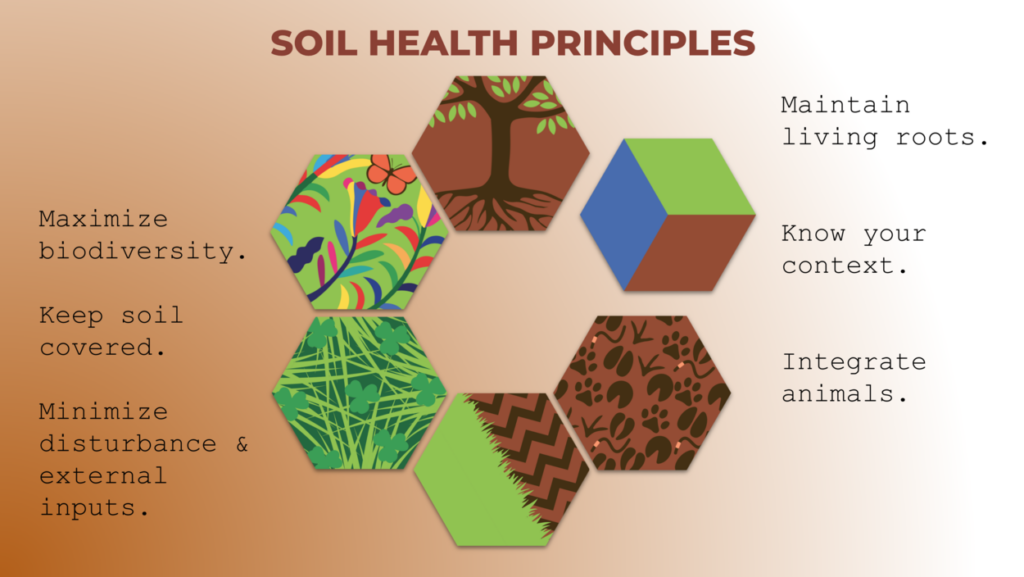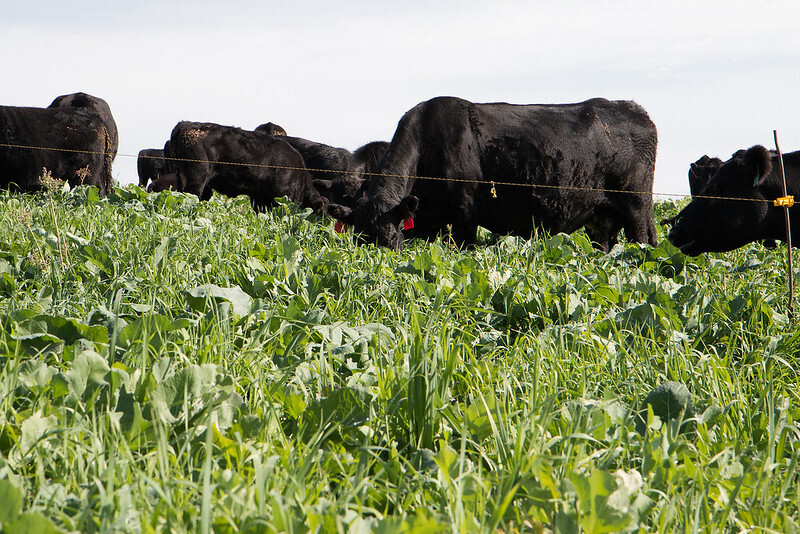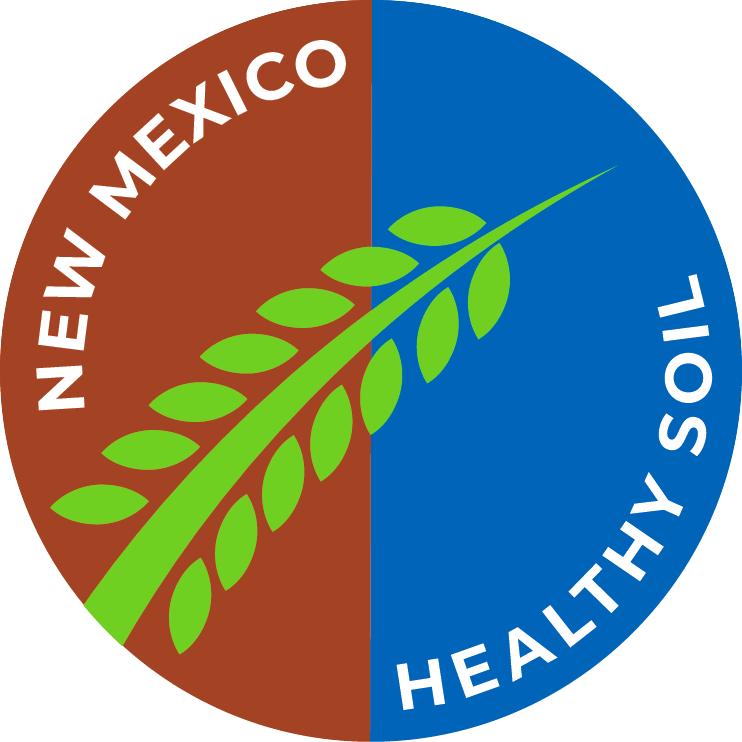The NM Grazing Exchange is a project by New Mexico Healthy Soil:
New Mexico Healthy Soil is a grassroots group that was created in the fall of 2018. It is our mission to achieve rapid adoption of healthy soil principles, resulting in greater ecological and human well being, significant water infiltration, rural prosperity, and climate resilient communities. We support land managers by offering resources, building coalitions, and advancing consensus based soil stewardship, while creating favorable government policy and raising active awareness in our civil society.
The soil health principles are central to our work:

Integrating animals in agricultural systems and proper grassland management is key to increasing overall soil health. The New Mexico Grazing Exchange was created to connect livestock producers or graziers and those with available cropland or forage by providing an interactive map and resources.
Definitions of Grazing Tiers
Tier 1: Community / Neighborhood Grazing
Community grazing involves small-scale livestock grazers using their animals to graze a community of small-scale property owners. These property owners range from ¼ acre to several acres; animals graze one parcel and are then are moved to a neighboring parcel. Community grazing increases community safety by reducing fire fuels on multiple properties. It can also:
- Provide internships and jobs in the community.
- Lower carbon footprints by way of eliminating the need to transport animals long distances via truck and trailer, and reducing the use of petrochemicals and synthetic herbicides.
Tier 2: Contract / Targeted Grazing
Contract or targeted grazing is the application of a specific kind of livestock at a determined season, duration, and intensity to accomplish defined vegetation or landscape goals. The major difference between targeted grazing and traditional grazing management is that targeted grazing refocuses outputs of grazing from livestock production to vegetation and landscape enhancement. In the case of contract/targeted grazing, the landowner must have a clear vision of their desired goals regarding plant community and landscape, and the livestock grazer must have the skill to graze the livestock in a way that accomplishes those goals.
Contract/target grazing contractors often provide all necessary infrastructure (fencing, livestock water, predator protection, etc.); however, there are a variety of factors that impact the cost of a particular targeted grazing project. These include:
- Relative ease (or difficulty) of setting up infrastructure, including loading and unloading facilities.
- Projects in steep or difficult-to-access terrain require more labor and are therefore typically costlier.
- Access to livestock water; livestock grazers may need to haul water to the livestock.
- Risks, like vandalism, toxic plants, or proximity to high-value landscaping may increase the cost.
- Headache factors – like free-roaming pet dogs or neighbors who object to livestock or livestock guardian dogs – can increase the cost of a project.
Tier 3: Traditional Grazing / Land leased on an annual or long-term basis
Traditional grazers are livestock producers that own cattle, sheep and/or goats that are managed year round on owned and/or rented properties – these grazers are interested in fulfilling their production goals. If they do not own grazing land, these livestock producers need to rent land for their animals to graze on. If a property is suitable for grazing, but the landowner lacks knowledge or desire to manage a grazing operation, leasing the land to a traditional grazer can be a good option. Rental fees are usually based on a per animal or per acre basis. Traditional grazers have the ability to haul their animals in and out of the leased property. If a property lacks infrastructure, a property owner and grazer can work together to install the necessary infrastructure to allow for grazing. These types of arrangements are best achieved by establishing a long-term lease and/or agreement – ensuring that both party’s needs and expectations are defined. Leasing lands for grazing can result in:
- A more cost-effective alternative for reducing fine and ladder fuels over large and rugged landscapes that may be inaccessible for equipment or hand crews.
- Income received from the grazing lease.
- Improved soil health and biodiversity.
Grazing on Public Lands and Lands that have Additional Requirements
When posting a publicly owned land or land that requires an application such as an RFP, we recommend you note that in the Additional Information field and include a link to the application.

Definitions of Forage Types:
Cover Crops
Cover crops are grasses, legumes, and other forbs that are planted for erosion control, improving soil structure, moisture, and nutrient content, increasing beneficial soil biota, suppressing weeds, providing habitat for beneficial predatory insects, facilitating crop pollinators, providing wildlife habitat, and as forage for farm animals.
Crop Residue
Crop residues are materials left in an agricultural field after the crop has been harvested. These residues include stalks and stubble, leaves, and seed pods.
Pasture
Pasture is defined as an area enclosed for growing forage and allowing animals to graze. Ranchers intensively maintain the health and productivity of their pastures through management practices typically including irrigation.
Rangeland
Rangelands are lands on which the native vegetation is predominantly grasses, grass-like plants, forbs, or shrubs suitable for grazing or browsing use. Rangelands include natural grassland, savannas, many wetlands, some deserts, tundra, and certain forb and shrub communities. Rangeland is less intensively managed than pastures, typically supports more native species, can be open (not enclosed by fencing) and can be grazed by wildlife or livestock.
